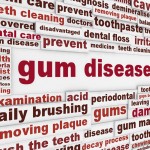
There is less information on the extent of periodontal disease in children and adolescents although gingivitis in differing degrees of severity is common. Chronic gingivitis is the commonest manifestation of the periodontal diseases in children. Oral disease in children could be influenced by a number of characteristic operating at the child-level, family -level or the community level.
The aim of this review was to assess the influence family/parent characteristics on periodontal disease in children and adolescents.
Methods
Searches were conducted in the PubMed, Embase, CINHAL and Cochrane databases. Cross-sectional and longitudinal studies evaluating the influence of family related characteristics on periodontal diseases were considered. Only studies published after 1st January 2007 were included studies that only included microbiological outcomes were excluded.
Two reviewers independently selected studies, extracted data and assessed study quality using the Effective Public Health Practice Project quality assessment tool for quantitative studies. A narrative summary of the findings was presented.
Results
- 32 studies were included.
- Only one of the studies was longitudinal, 7 of the studies were considered to be moderate the remainder weak.
- 8 studies were from Brazil; 2 from each of Sri Lanka, Turkey, Sudan and Greece, and 1 from each of Argentina, Belgium, Estonia, Japan, New Zealand, Romania, South Korea, Sweden, USA and Yemen.
- The main outcome in the majority of studies was gingivitis with bleeding on probing the most used measure.
- 11 studies considered family income, 20 mother’s and 11 father’s educational status, 3 looked at occupation and 5 used proxy measures of socio-economic status. 13 studies looked at parental knowledge, practices or clinical status.
- Data suggests that
- 3 indicators of parent’s socioeconomic status (income, education and occupation) are significantly associated with periodontal diseases in children.
- Better periodontal status was seen in children of parents with higher SES than those with lower SES.
- children exposed to passive smoking and having parents with periodontal diseases are more likely to present with periodontal diseases as well.
Conclusions
The authors concluded: –
Data from the reviewed articles indicate that all the three commonly used indicators of parent’s SES namely income, education and occupation are significantly associated with periodontal diseases in children. Better periodontal status was observed in children of parents with higher SES than those children whose parents were of lower SES. Although the association between parent’s smoking practices, level of periodontal diseases and children’s periodontal status was explored in only a few studies, findings indicate that children exposed to passive smoking and having parents with periodontal diseases are at greater risk of periodontal diseases themselves
Comments
The authors have searched a broad range of databases but restricted their inclusions to those studies published after 1st January 2007 which could have implications for the findings. With the exception of 1 longitudinal study all the included studies are cross-sectional in nature with only 7 of the included studies being considered to be of moderate quality. The included studies also suffered from heterogeneity regarding both the explanatory variables the outcomes considered. The review presents a helpful summary of recent studies which are focused mainly on socio-economic factors. Additional higher quality better reported studies are needed including greater consideration of parental health behaviours and psychosocial variables.
Links
Primary Paper
Tadakamadla SK, Tadakamadla J, Kroon J, Lalloo R, Johnson NW. Effect of family characteristics on periodontal diseases in children and adolescents-A systematic review. Int J Dent Hyg. 2019 Apr 2. doi: 10.1111/idh.12398. [Epub ahead of print] Review. PubMed PMID: 30941877.
